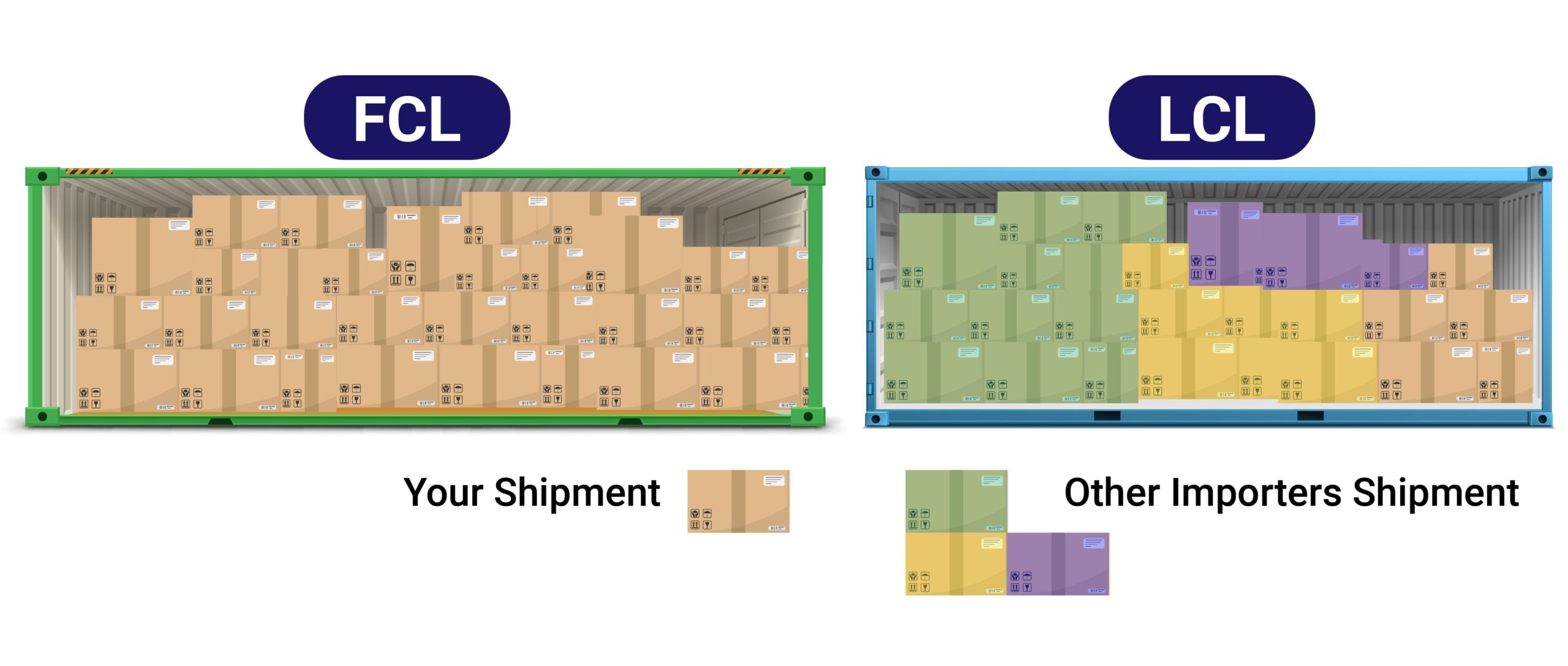
Today, let’s talk about the difference between FCL and LCL shipments. In particular, we will focus on LCL.
What LCL means?
LCL stands for Less than Container Load, which is a service for consolidating cargo. Unlike FCL, where one container is fully loaded with goods, LCL involves shipping goods using only part of the container space. It’s important to be attentive because the calculation of shipping costs differs between LCL and FCL.
First and foremost, LCL refers to “load less than the volume of one container.” It is used for transporting goods that have a volume smaller than that of a full container. In this case, we are referring specifically to a twenty-foot container (also known as 20ft). The dimensions of a 20ft container are approximately 2.3 meters in width, 6 meters in length, and 2.3 meters in height. The total volume is around 31 cubic meters (m³), and when there is enough cargo to fill this volume completely, it will be considered an FCL shipment.
But what do you do when you only have half or less than half of the required cargo volume for a full container?
If your cargo has just 1 m³ or less in volume, then you need to use LCL services. However, what is the maximum cargo volume at which it becomes more cost-effective to choose LCL?
To determine this point and calculate break-even point for both FLC and LFL shipments effectively requires understanding different pricing rules applied by carriers. Unlike FCL freight charges based on containers size irrespective payload weight, LCL charges depend on either volumetric weight or actual physical weight whichever greater.
Additional expenditures to take into consideration
Note that besides freight rates additional expenditures occur during loading and unloading operations, now let’s delve into some details.
A twenty-foot container has a fixed cost per container, while the cost of LCL shipping depends on the size or weight of the cargo, whichever is greater. Let’s consider 1 m³ as a unit for measurement. In this case, CFS (Consolidated Freight Station) becomes essential to understand — it refers to costs incurred at consolidation warehouses where cargo is loaded into containers. These expenses are specific to LCL shipments.
Terminal handling charges apply fees for using port services; therefore, they occur in both FCL and LCL conditions.

Keep in mind that actual ocean freight rates may vary depending on forwarder tariffs, but terminal handling charges and consolidation rates should be relatively similar across transportation companies.
On the other hand, when considering an LCL shipment with a volume of 15m³:
Since the cost depends on volume size here you’d need to multiply each additional cubic meter by your required volume (15m³).
It’s important also to mention that these numbers are provided solely for comparison purposes between FCL and LCL options based on a standardized assumption regarding an LTL cargo dimension equaling fifteen cubic meters.
However fluctuations will happen depending on various factors such as dimensions changes or service provider offerings. So you will need to calculate each time what mode is best for you.
